 Chapter 5 Self Quiz: Energy
Chapter 5 Self Quiz: Energy 
- Objects that have the capacity to move but are not moving have ________ energy.
- potential (correct)
- heat (wrong)
- no (wrong)
- passive (wrong)
- kinetic (wrong)
Hint
-
 In the energy flow from sunlight to cells, the ________ energy in covalent bonds of sugars us converted into ________ energy.
In the energy flow from sunlight to cells, the ________ energy in covalent bonds of sugars us converted into ________ energy.
- potential, kinetic (correct)
- kinetic, potential (wrong)
- chemical, physical (wrong)
- activation, heat (wrong)
- heat, activation (wrong)
Hint
- ________ is the main energy currency of the cell.
- ATP (correct)
- DNA (wrong)
- RNA (wrong)
- Cholesterol (wrong)
- Ribosome (wrong)
Hint
- In plants, photosynthesis occurs in
- central vacuole (wrong)
- cell wall (wrong)
- mitochondria (wrong)
- chloroplasts (correct)
- nucleus (wrong)
Hint
- Chlorophyll and carotenoids are
- forms of DNA (wrong)
- membranes (wrong)
- pigments (correct)
- organelles (wrong)
- carbohydrates (wrong)
Hint
-
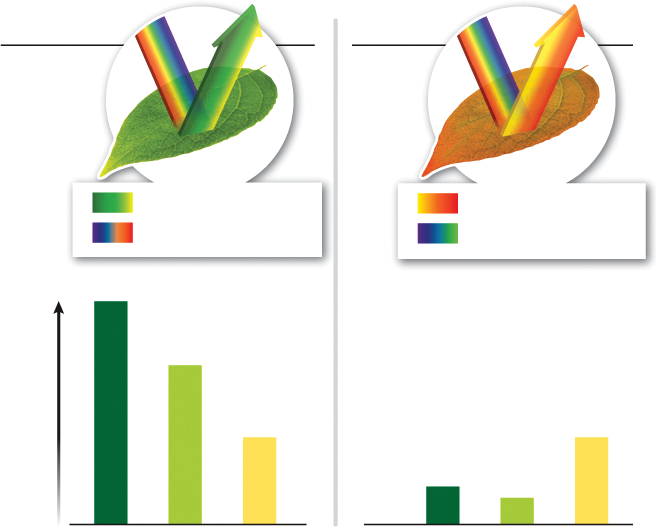 The reason the leaves of many trees turn orange and yellow in the fall is:
The reason the leaves of many trees turn orange and yellow in the fall is:
- frost causes chlorophyll to change color (wrong)
- chlorophyll and carotenoid pigments react with each other to form new colors (wrong)
- plants do not produce chlorophyll in cool weather so it no longer masks carotenoid pigments (correct)
- the chlorophyll pigments are converted to carotenoids (wrong)
- more chlorophyll is produced in the fall (wrong)
Hint
-
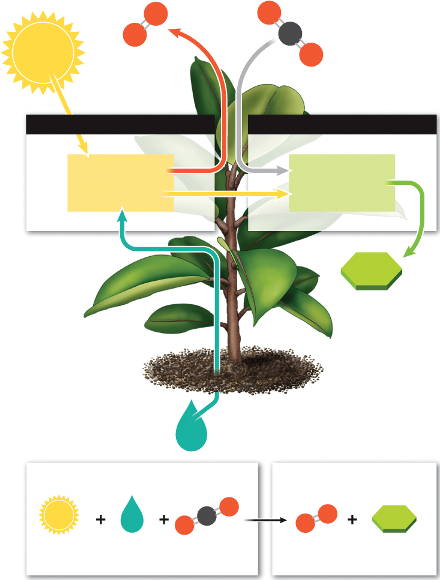 In addition to energy from light, The inputs of photosynthesis are
In addition to energy from light, The inputs of photosynthesis are
- sugar and oxygen (wrong)
- carbon dioxide and water (correct)
- oxygen and water (wrong)
- water and sugar (wrong)
- heat and oxygen (wrong)
Hint
-
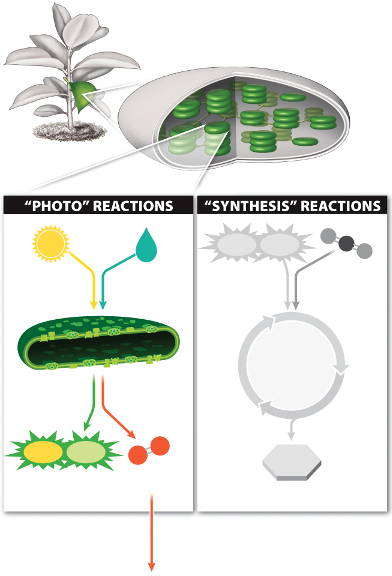 ________ is split to release oxygen during photosynthesis.
________ is split to release oxygen during photosynthesis.
- Carbon dioxide (wrong)
- ATP (wrong)
- Glucose (wrong)
- Oxygen (wrong)
- Water (correct)
Hint
-
 During photosynthesis, which are products of the "photo" reactions that are later used in the "synthesis" reactions?
During photosynthesis, which are products of the "photo" reactions that are later used in the "synthesis" reactions?
- oxygen and carbon dioxide (wrong)
- ATP and NADPH (correct)
- water and oxygen (wrong)
- water and carbon dioxide (wrong)
- glucose and carbon dioxide (wrong)
Hint
-
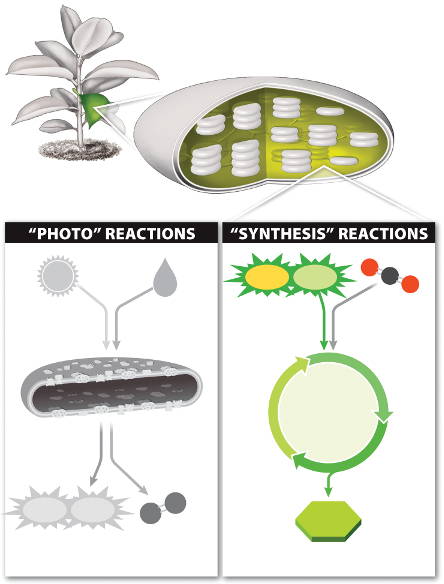 The Calvin cycle (synthesis reactions) of photosynthesis takes place in the
The Calvin cycle (synthesis reactions) of photosynthesis takes place in the
- stroma of chloroplasts (correct)
- thylakoid membranes of chloroplasts (wrong)
- vacuoles (wrong)
- mitochondria (wrong)
- nucleus (wrong)
Hint
-
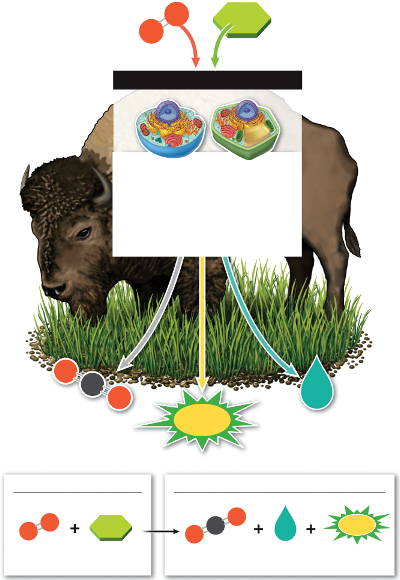 What are the outputs of cellular respiration?
What are the outputs of cellular respiration?
- oxygen and ATP (wrong)
- CO2 and water (correct)
- oxygen and water (wrong)
- glucose and water (wrong)
- ATP and NADH (wrong)
Hint
- Cellular respiration involves all of the following EXCEPT:
- acetyl-coA (wrong)
- pyruvate (wrong)
- NADPH (correct)
- NADH (wrong)
- ATP (wrong)
Hint
-
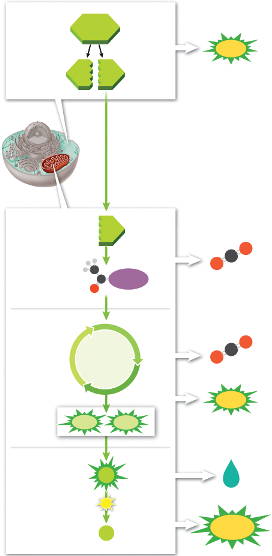 During cellular respiration, the 2-carbon molecule that enters the citric acid cycle is
During cellular respiration, the 2-carbon molecule that enters the citric acid cycle is
- glucose (wrong)
- pyruvate (wrong)
- acetyl-coA (correct)
- NADH (wrong)
- ATP (wrong)
Hint
- Which kinds of macromolecules can enter the Citric acid cycle?
- amino acids (wrong)
- nucleotides (wrong)
- sugars (wrong)
- fatty acids (wrong)
- all of the above (correct)
Hint
 Chapter 5 Self Quiz: Energy
Chapter 5 Self Quiz: Energy 
 Chapter 5 Self Quiz: Energy
Chapter 5 Self Quiz: Energy 
 The reason the leaves of many trees turn orange and yellow in the fall is:
The reason the leaves of many trees turn orange and yellow in the fall is:
 In addition to energy from light, The inputs of photosynthesis are
In addition to energy from light, The inputs of photosynthesis are
 ________ is split to release oxygen during photosynthesis.
________ is split to release oxygen during photosynthesis.
 During photosynthesis, which are products of the "photo" reactions that are later used in the "synthesis" reactions?
During photosynthesis, which are products of the "photo" reactions that are later used in the "synthesis" reactions?
 The Calvin cycle (synthesis reactions) of photosynthesis takes place in the
The Calvin cycle (synthesis reactions) of photosynthesis takes place in the
 What are the outputs of cellular respiration?
What are the outputs of cellular respiration?
 During cellular respiration, the 2-carbon molecule that enters the citric acid cycle is
During cellular respiration, the 2-carbon molecule that enters the citric acid cycle is